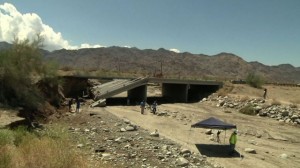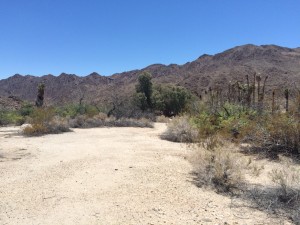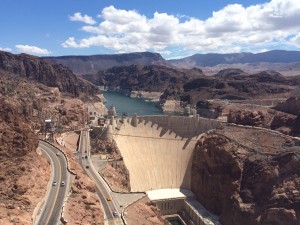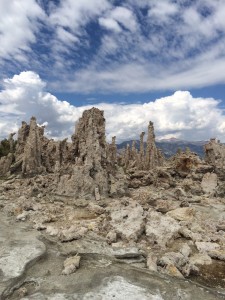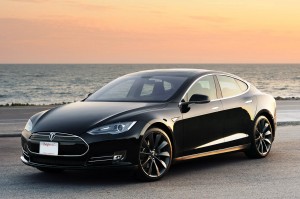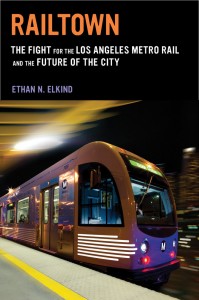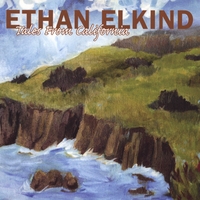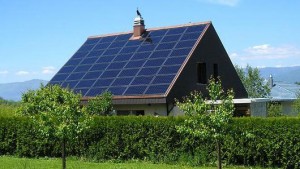 So says a new study by UC Berkeley economists Severin Borenstein and Lucas Davis. After looking at IRS data on tax credit programs like for electric vehicles, renewable energy, and energy efficiency improvements, they found that most of the benefits are going to top-income earners. In part it’s because lower-income renters don’t have access to property-based credit programs.
So says a new study by UC Berkeley economists Severin Borenstein and Lucas Davis. After looking at IRS data on tax credit programs like for electric vehicles, renewable energy, and energy efficiency improvements, they found that most of the benefits are going to top-income earners. In part it’s because lower-income renters don’t have access to property-based credit programs.
But they also found that the programs are inefficient at encouraging better energy usage:
What about efficiency? Although tax credits may initially seem like a good idea, they are actually quite a poor substitute for first-best policies like a carbon tax or cap-and-trade program. Probably the single biggest limitation of a tax credit is that it cannot achieve the efficient level of usage. Take energy-efficient windows as an example. A tax credit can encourage households to install better windows, but it cannot get households to use less heating and air-conditioning. A carbon tax, in contrast, would encourage households both to install better windows and to use less heating and air-conditioning.
One could argue in response that the inequities may even out over time — as high-income residents buy electric vehicles and renewables like solar, the costs are coming down and bringing the technologies within range of lower-income residents. And these programs are certainly better than nothing.
But in the long term, they should be replaced by the programs that Davis and Borenstein advocate: a carbon tax or rigorous cap-and-trade system.
I’m just back from a vacation road trip through Southern California, Arizona, Nevada and the Sierra Nevada. Along the way, I saw evidence of our progress in transitioning to a cleaner economy, but also the impacts of climate change.
For starters, we were lucky to make it through the Southern California Desert before a freak July rainstorm destroyed another decaying piece of infrastructure — a highway bridge over the Texas Wash near Desert Center. Interstate 10 is now closed through that area. Hard to imagine a more powerful symbol of both our need for transportation investments and the likely future of severe climate impacts.
In that same area, we off-roaded to a beautiful campground at Corn Springs, a major stopoff and village site for local Native Americans and a very interesting canyon beyond the desert floor. The spring is now dry, presumably from dewatering related to local mining.
Meanwhile, we saw solar panels galore, including major solar installations north of Interstate 10. It seemed like almost every emergency roadside phone stand had a solar panel above it, evidence of the now-cheap cost of panels.
For electric vehicles, we didn’t see many, other than a few Teslas in Mammoth Lakes. It will be a while before remote areas of the U.S. are truly reachable and workable for EVs.
For further climate impacts related to drought, we visited Boulder (Hoover) Dam, and saw the ridiculously low lake level. Mono Lake also has not risen anywhere near the shoreline elevation required by the 1994 State Water Resources Control Board decision to restore the lake.
But if these July rains keep up, maybe the rain cycle will be reversing in California and throughout the west. Not that that would be a good thing for the climate and ecology here.
Finally, we visited the ancient bristlecone pine trees — the oldest living things on Earth — in the White Mountains past the eastern Sierra Nevada. One grove featured trees older than 4000 years. Always nice to put things into perspective. Let’s hope people will still be able to visit these trees in another 4000 years.
 Per legislation passed in 2013, California’s investor-owned utilities finally had to disclose and map their energy system needs and information at the distribution level (i.e. areas served by wooden electric poles). The plans the utilities filed this month will greatly assist clean technology purveyors of all stripes:
Per legislation passed in 2013, California’s investor-owned utilities finally had to disclose and map their energy system needs and information at the distribution level (i.e. areas served by wooden electric poles). The plans the utilities filed this month will greatly assist clean technology purveyors of all stripes:
Mandated by state law AB 327, these DRPs are essentially blueprints for how Pacific Gas & Electric, Southern California Edison, and San Diego Gas & Electric are going to merge rooftop solar, behind-the-meter energy storage, plug-in electric vehicles and other distributed energy resources (DERs) into their day-to-day grid operations and long-range distribution grid planning and investment regimes.
As more solar, energy storage, and electric vehicles come on-line, utilities will need both to plan for these resources and make it easier for clean technology companies to know where to place the resources for optimal value and ideally optimal revenue. While not perfect, the plans filed this month are an important step to a cleaner and more reliable grid.
The first change is that lower-income households will get a large boost in assistance. Those with incomes less than 300% of the Federal Poverty Limit will now get up to $3,000 toward a plug-in hybrid, $4,000 for an EV, and $6,500 for a fuel cell vehicle.
This means individuals earning less than $35,310 and a family of three earning less than $60,270 now qualify for double the old amount for plug-in hybrids and 60% more on EVs. Previously the rebates were $1,500 and $2,500 respectively.
The second change is the elimination of the incentive for EV and Plug-in Hybrid vehicles for those with the highest incomes. The plan calls for an income threshold of $250,000 for individuals, $340,000 for head-of-household, and $500,000 for those filing jointly.
The change is the result of legislation that passed last year to try to make the rebate program more equitable, and ideally to encourage more low-income residents to buy EVs. EVs are still largely the province of higher-income buyers. But for at least half of buyers of the luxury Tesla Model S, for example, the rebate made no difference in their purchasing decisions (see data on rebate recipient profiles and attitudes here [PDF]). So why not spread that money around to lower-income buyers, where an extra thousand bucks or so could make the difference?
It will be interesting to track the effects of this change. The big question is: will it hurt overall EV sales? Or will any decrease in upper-income purchases be offset by increases in low-income EV adoption? And if so, will that help boost political support for pro-EV policies? If this change is successful, look for other states with incentive programs — and maybe the federal government with its generous EV tax credit — to follow suit.
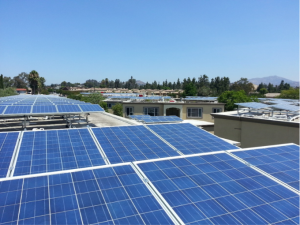 With more solar panels, internet connected home appliances, electric vehicles, and small-scale batteries, California will soon have millions of “distributed” energy resources it can tap into to make the grid more efficient and clean. The entity in charge of managing the grid just made it much easier to connect and aggregate these items as a bulk resource:
With more solar panels, internet connected home appliances, electric vehicles, and small-scale batteries, California will soon have millions of “distributed” energy resources it can tap into to make the grid more efficient and clean. The entity in charge of managing the grid just made it much easier to connect and aggregate these items as a bulk resource:
California is already busy creating new regulations and market structures to integrate rooftop solar, behind-the-meter batteries, plug-in electric vehicles and fast-acting demand response systems into its grid. This week, California’s grid operator took another step down this path — one that could allow these resources to tap the state’s grid markets as a revenue-generating resource, possibly as early as next year.
On Wednesday, the California Independent System Operator (CAISO) published a proposal (PDF) for creating a new class of grid market players, known as distributed energy resource providers — DERPs for short. In simple terms, the proposal sets rules for how DERs can be aggregated and dispatched to serve the same grid markets open to utility-scale energy installations today.
As the rules roll out and get refined, the state will become an international leader on integrating these resources into the grid, while providing owners of these assets with an additional revenue stream — further encouraging their deployment.
It’s one of the best uses I’ve seen for used EV batteries — putting them to use as mobile charging devices for EVs. That’s what Freewire is doing, and their product is a top four finalist for the SAFE energy security prize, to be announced at the end of July. Here’s the promo video:
You can read more about what it will take to boost a market for used EV batteries in Berkeley / UCLA Law’s Reuse and Repower report.
This time-lapse video shows the progress in the past 2.5 years:
Compare that progress to eVgo, which is struggling to spend $100 million in settlement money on a variety of charging infrastructure deployment in California. Progress is so bad that the California Public Utilities Commission is now hiring an auditor to find out what’s going on. I’ll eagerly await that report.
Global Tucson Fuel Cell sales stood at just 273 units as of May, [Hyundai] said today, according to the Yonhap news service.
That includes 76 units delivered in 2013, 128 units in 2014, and 69 units for the first five months of this year.
Just 29 of the crossovers were sold in Hyundai’s home market of South Korea, with the rest going to the U.S. and Europe.
I’m open to the idea that hydrogen fuel cells could be a good fit for long-haul trucking (certainly battery electrics seem unlikely to work well in that capacity). But for the average car driver? Not so much. Battery electrics are much cheaper, easier, and environmentally friendly.
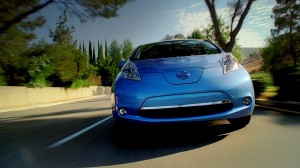 So says Navigant Research, a respected market research firm that covers EVs extensively:
So says Navigant Research, a respected market research firm that covers EVs extensively:
The report includes a detailed look at the geographic distribution of plug-in sales. Most of the action is in California, where PEVs already account for more than 3% of the state’s total light-duty vehicle market. State incentives, together with the state’s Zero Emission Vehicle program, are expected to push PEV penetrations in Cal to between 15% and 22% by 2024.
The other 10 states that participate in the ZEV program are expected to see similar growth. Navigant predicts that Hawaii, Washington, and Georgia could also see penetration rates above 7% in 2024.
The write-up from Charged EV magazine acknowledges that sales could grow significantly with more 200-mile range battery electric vehicles that sell for less than $40,000. My hope is that these market predictions will wildly underestimate actual sales, much as the initial projections of cell phone usage were badly off.
We’ll certainly need more EVs to meet our long-term climate goals, not to mention all the co-benefits that come with driving electric.
A highly entertaining and informative (and long) read on the history of energy, climate, cars and Tesla by Tim Urban at “Wait But Why.” Elon Musk participated in the drafting of the post. I was particularly struck by this nugget on climate history:
18,000 years ago, global temperatures were about 5ºC lower than the 20th century average. That was enough to put Canada, Scandinavia, and half of England and the US under a half a mile of ice. That’s what 5ºC can do.8
100 million years ago, temperatures were 6-10ºC higher than they are now—and there were palm trees on the poles, no permanent ice anywhere, ocean levels were 200 meters higher, and this kind of shit was happening:
So we’re currently in this not-that-big window we probably should try to stay in:
I recommend reading the whole thing. Happy Friday!

